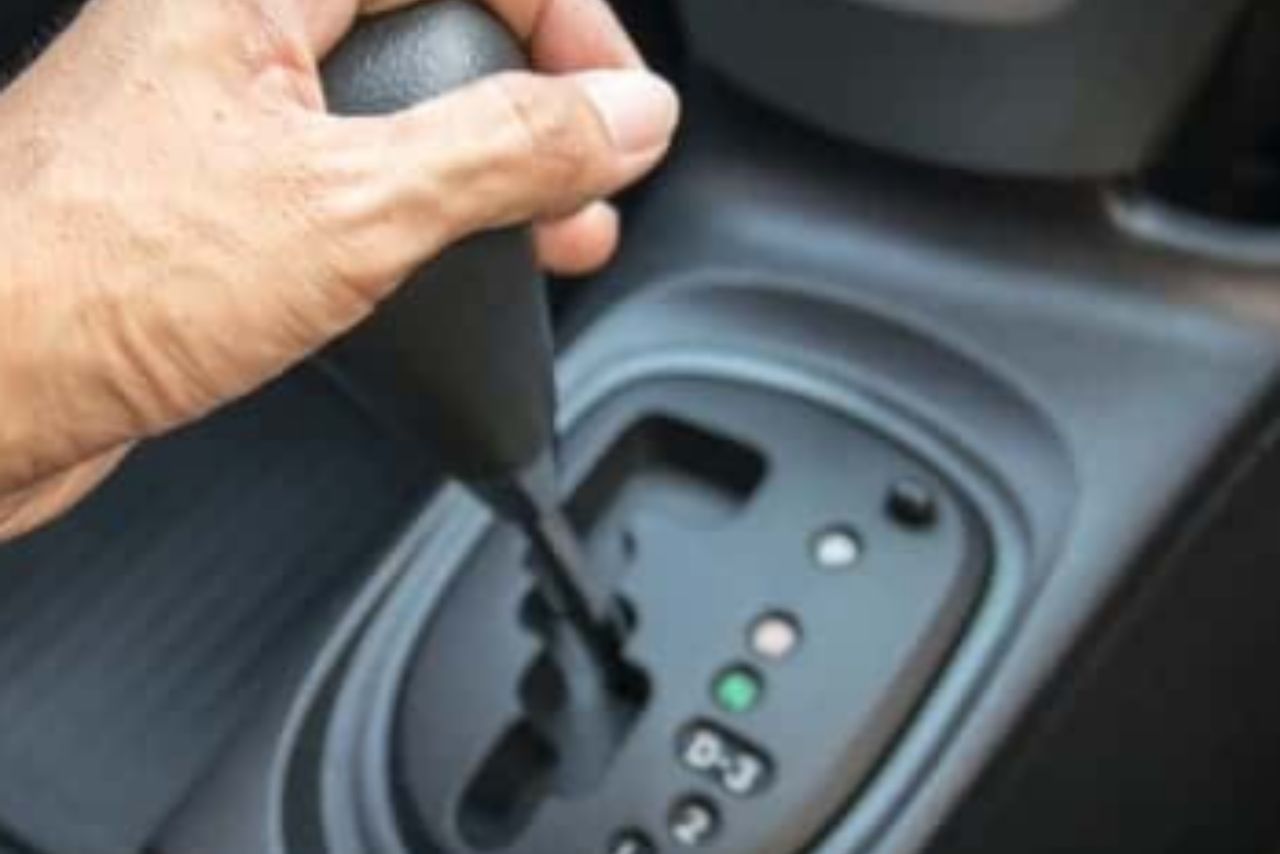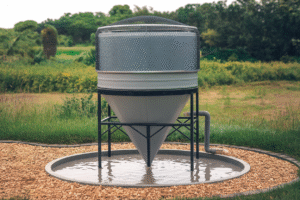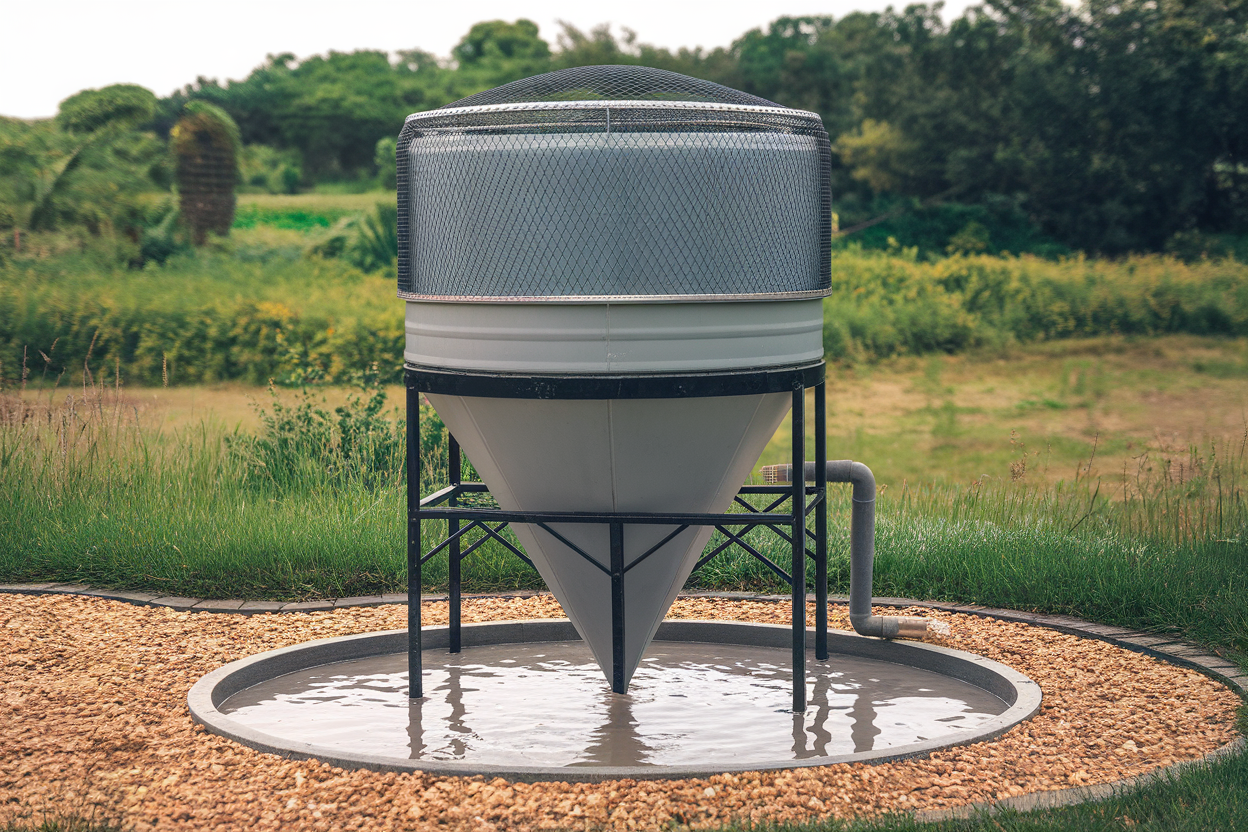If you own a Honda Civic with an automatic transmission, you may have noticed a gear labeled ‘D3’on your gear shifter.
While you may be familiar with the ‘D'(drive) gear, you may be wondering what the purpose of the D3 gear is.
Understanding the different gears in your car can not only help you to be a better driver, but it can also help you to maintain your vehicle properly.
In this article, you will learn about the What Is The D3 Gear For In A Honda Civic? including its purpose, benefits, and how to use it effectively.
The D3 gear is not just an extra gear that you can ignore. In fact, it has a specific purpose that can come in handy in certain driving situations.
By using the D3 gear, you can improve your car’s handling and reduce wear and tear on your transmission. However, it’s important to understand how and when to use the D3 gear properly.
Table of contents
Understanding the Basics of Automatic Transmissions:
Want to know how your Honda Civic’s automatic transmission works? Let’s dive into the basics!
An automatic transmission is a complex system that uses a combination of gears and hydraulic pressure to shift gears automatically, without any input from the driver.
It’s an important part of your car’s drivetrain and needs to be properly maintained to ensure smooth operation.
Automatic transmission maintenance is crucial to keep your Honda Civic running smoothly. One of the most important aspects of transmission maintenance is understanding transmission fluid.
This fluid is responsible for cooling, lubricating, and cleaning the internal components of the transmission.
It’s important to check the fluid level regularly and change it according to the manufacturer’s recommendations.
Failing to maintain the proper level and quality of transmission fluid can result in transmission damage and costly repairs.
What is the D3 Gear?
You may have noticed a “D3″option on your shift lever, which is a lower gear that provides several benefits and increased control. Here are some of the benefits and usage of the D3 gear:
-
More Engine Power: The D3 gear allows the engine to deliver more power when driving at slower speeds or up steep hills, making it easier to climb steep grades or accelerate quickly.
-
Better Control: The D3 gear reduces the transmission’s shift range, providing better control over your vehicle’s speed. This reduces the need to apply the brakes frequently when driving downhill or on winding roads.
-
Enhanced Towing Capability: When towing a trailer or other heavy load, the D3 gear can provide more power and torque, allowing for a smoother and safer towing experience.
The D3 gear is a useful tool that can provide more power and control in various driving situations.
Whether you’re navigating steep hills, towing a trailer, or driving on winding roads, the D3 gear can help you stay safe and in control.
Benefits of Using the D3 Gear:

When you engage the D3 gear in your Honda Civic, you’ll experience improved traction on slippery roads. The gear locks the transmission in third gear, providing more torque to the wheels.
Additionally, the D3 gear gives you increased control over your vehicle. You can better navigate tight turns and winding roads.
Finally, the enhanced engine braking provided by the D3 gear helps you slow down more quickly and safely on steep hills.
Improved Traction:
By installing D3 gear in a Honda Civic, you can experience improved traction while driving in various weather conditions. This is especially helpful during winter driving, when roads can be slick and icy.
The D3 gear allows for a lower gear ratio, which means more power is sent to the wheels.
This increased power results in better grip on the road, allowing you to maintain control of your vehicle even in slippery conditions.
To illustrate the benefits of improved traction with D3 gear, consider the following table:
| Road Condition | Without D3 Gear | With D3 Gear |
|---|---|---|
| Dry | Good | Excellent |
| Wet | Fair | Good |
| Snow | Poor | Fair |
As you can see, the D3 gear greatly improves traction in all types of road conditions, but especially in snow. With the D3 gear, you can confidently drive on snowy roads without fear of losing control.
Overall, installing D3 gear in your Honda Civic is a smart investment that can greatly improve your driving experience, particularly in challenging weather conditions.
Increased Control:

Feeling like you’re in complete control of your car is crucial for any driver, so imagine how much more confident you could be on the road if every turn and maneuver was executed flawlessly.
Can you feel the difference in handling when every movement is smooth and precise?
The D3 gear in a Honda Civic offers increased control, allowing you to drive with precision and finesse. Here are three ways the D3 gear can help you improve your driving techniques and take on challenging road conditions:
-
Better acceleration: The D3 gear allows you to remain in a lower gear, providing better acceleration. This is especially useful when driving on steep inclines or when you need to quickly merge onto a busy highway.
-
Greater engine braking: With the D3 gear engaged, your engine can slow the car down more effectively than in standard drive mode. This is useful when driving downhill or when you need to slow down quickly.
-
Improved response: The D3 gear provides better throttle response, allowing you to make quick and precise adjustments to your speed. This is useful when driving on winding roads or when you need to avoid obstacles on the road.
Overall, the D3 gear is a powerful tool for any driver who wants to take their driving skills to the next level.
By providing increased control and precision, it can help you navigate challenging road conditions and execute advanced driving techniques with ease.
Enhanced Braking:
Now that you have learned how the D3 gear technology in your Honda Civic improves your control on the road, let’s dive into another important aspect of driving: braking.
The D3 gear also enhances your brake performance, making your stops smoother and more efficient.
The D3 gear works by downshifting the transmission when you brake, allowing the engine to slow down the car and reducing the workload on your brakes.
This not only improves your braking distance, but also reduces wear and tear on your brake pads and rotors.
Additionally, the D3 gear technology also provides better engine braking, allowing you to maintain better control of the car in steep descents or on slippery roads.
Take a look at the following table to see how the D3 gear technology improves your brake performance:
| Without D3 Gear | With D3 Gear |
|---|---|
| Longer stopping distance | Shorter stopping distance |
| More wear and tear on brakes | Less wear and tear on brakes |
| Less control in steep descents | More control in steep descents |
Overall, the D3 gear technology in your Honda Civic is designed to provide you with a safer and more efficient driving experience.
By enhancing your control and brake performance, the D3 gear allows you to navigate the roads with confidence and ease.
How to Engage the D3 Gear?

To engage the D3 gear in your Honda Civic, simply shift the lever down to the D3 position and experience a more controlled and responsive driving experience.
Engaging D3 gear is particularly useful when driving in mountainous or hilly terrain, or when towing heavy loads.
Using this gear allows you to limit the transmission to the first three gears, providing greater engine braking and helping the vehicle maintain a lower speed on steep inclines.
When driving in D3 gear, you can expect a more engaging driving experience. The gear allows you to take greater control of your vehicle, and gives you the power to accelerate smoothly and quickly when needed.
Furthermore, using D3 gear is beneficial for prolonging the life of your vehicle’s transmission, as it reduces the amount of wear and tear on the gears.
Overall, engaging D3 gear in your Honda Civic is a simple and effective way to improve the driving experience and take better care of your vehicle.
Tips for Using the D3 Gear:
When using the D3 gear in your Honda Civic, it’s important to remember that this gear is designed for specific driving conditions.
- One of the best times to use the D3 gear is when driving on hills.
- By using the D3 gear, you can take advantage of the engine’s power to help you climb hills more easily.
- Additionally, when towing a trailer or carrying a heavy load, the D3 gear can be very useful.
- It provides the engine with more torque, which can help you get your load moving and keep it moving up hills.
- However, it’s important to use the D3 gear appropriately.
- Using it at high speeds or on flat terrain can cause unnecessary wear and tear on your engine and transmission. Additionally, using the D3 gear for extended periods of time can cause your engine to overheat.
- To help you use the D3 gear more effectively, the table below provides some tips for using this gear on hills and for towing.
| Driving Condition | D3 Gear Usage Tips | Emotional Response |
|---|---|---|
| Driving up a steep hill | Shift into D3 gear before you reach the bottom of the hill. Use the gear to help you climb the hill more easily. | Confidence |
| Towing a trailer | Use the D3 gear to help you get your load moving and keep it moving up hills. Avoid using the gear at high speeds or on flat terrain. | Security |
| Descending a steep hill | Do not use the D3 gear when descending a steep hill. Instead, use your brakes to control your speed. | Safety |
| Normal driving conditions | Avoid using the D3 gear for extended periods of time or at high speeds. | Efficiency |
By following these tips and using the D3 gear appropriately, you can make the most of this feature in your Honda Civic.
Whether you’re driving up a steep hill or towing a heavy load, the D3 gear can help you drive with more confidence and security.
Just remember to use it responsibly and avoid using it in situations where it’s not needed.
Common Misconceptions About the D3 Gear:
Don’t be fooled by common misconceptions about how the D3 gear operates; it’s important to understand its proper usage to optimize your driving experience. Here are some benefits explained:
-
The D3 gear in a Honda Civic is designed to provide more torque and power in the lower gears. This means that it can be used for driving in situations where you need more acceleration, such as when merging onto a highway or passing another vehicle.
-
Contrary to popular belief, the D3 gear is not meant for driving at high speeds. In fact, using the D3 gear at high speeds can cause damage to your engine and transmission. It’s important to only use the D3 gear when driving at low speeds, such as in stop-and-go traffic or on steep hills.
Next, let’s debunk some common misconceptions about the D3 gear:
-
Some drivers believe that using the D3 gear will improve their fuel efficiency. However, this is not the case. In fact, using the D3 gear can actually decrease your fuel efficiency because the engine is working harder to provide more power.
-
Another common misconception is that the D3 gear is only meant for use in snow or ice. While the D3 gear can provide more traction in slippery conditions, it is not exclusively for use in these situations. It can be used in any low-speed driving scenario where more power is needed.
-
Finally, some drivers believe that using the D3 gear will make their car faster. While the D3 gear can provide more acceleration, it will not increase the top speed of your vehicle. It’s important to remember that the D3 gear is designed to provide more power in the lower gears, not to increase overall speed.
Other Useful Driving Features in the Honda Civic:
Now that you’re familiar with the common misconceptions about the D3 gear in a Honda Civic, let’s discuss some other useful driving features that you might not know about.
The Eco Assist system helps you drive more efficiently by providing feedback on your driving habits and optimizing the engine and transmission performance.
Hill Start Assist prevents your car from rolling backwards when starting on a steep incline.
Brake Hold makes it easier to stay stopped at traffic lights or in heavy traffic.
Remember to leave a double new line after each complete sentence for logical grouping. Don’t forget to use contractions.
Eco Assist:
By utilizing the Eco Assist feature in your Honda Civic, you can drive in a more environmentally-friendly way and potentially save money on gas, similar to how a plant conserves water and energy to sustain itself.
This feature analyzes your driving habits and provides real-time feedback on how to improve your fuel efficiency.
By following the Eco Assist suggestions, drivers can reduce their carbon footprint and ultimately save money on gas.
To better understand how Eco Assist works, take a look at the table below. It shows the different colors and indicators that appear on your Civic’s dashboard, and what they mean in terms of fuel efficiency.
By monitoring these indicators while driving, you can adjust your habits accordingly and improve your overall fuel economy. With Eco Assist, you can be a more eco-friendly driver while also saving money on gas in the long run.
| Eco Assist Indicator | Color | Meaning |
|---|---|---|
| ECON Mode Button | Green | Activates ECON mode, which adjusts throttle response and air conditioning to improve fuel efficiency |
| Eco Assist System | Green | Driving habits are eco-friendly |
| Eco Assist System | Blue | Driving habits are not as eco-friendly |
| Speedometer Ring | Blue | Efficient driving |
| Speedometer Ring | White | Inefficient driving |
Hill Start Assist:
Improve your driving experience on steep inclines with Hill Start Assist, a feature that helps you smoothly transition from braking to accelerating without rolling backwards.
Hill Start Assist works by automatically engaging the brakes when you come to a stop on a hill, and then releasing them when you press the accelerator pedal.
This prevents your car from rolling backward, giving you time to focus on accelerating and moving forward.
The advantages of using Hill Start Assist are numerous. For one, it reduces the stress of driving on hills, especially for drivers who aren’t used to driving on steep inclines.
It also prevents accidents caused by rolling backward, which can be particularly dangerous in busy intersections or on roads with heavy traffic.
Hill Start Assist is a feature that not only improves your driving experience but also enhances your safety on the road.
Brake Hold:
You’ll love the convenience of Brake Hold, which allows you to keep your foot off the brake pedal while stationary at a stoplight or in traffic.
This feature is ideal for those who frequently encounter heavy traffic or have to stay at a stoplight for a long time.
Once you come to a complete stop, simply press the Brake Hold button, and the system will hold the brakes for you.
This means you can relax your foot and keep it off the brake pedal, reducing fatigue and strain on your foot.
Brake Hold is not only convenient, but it’s also a safety feature. In an emergency stop situation, the system will automatically hold the brakes once the vehicle comes to a complete stop.
This can prevent the vehicle from rolling backward or forward, providing extra safety for you and your passengers.
With Brake Hold, you can enjoy a more comfortable and safer driving experience.
How to Maintain Your D3 Gear?
If you’re driving a Honda Civic with a D3 gear, it’s important to know how to maintain it properly. Regular maintenance is key to keeping your D3 gear in good working condition.
Common issues that can arise with the D3 gear include fluid leaks, electrical problems, and mechanical failures.
By staying on top of maintenance and being aware of potential issues, you can ensure that your D3 gear continues to function optimally for years to come.
Regular Maintenance:
For proper upkeep, it’s essential to regularly change the oil, transmission fluid, and air filters in your Honda Civic, as well as inspect the brakes and tires.
Scheduling these maintenance tasks at regular intervals is crucial to ensure that your car runs smoothly and safely.
Neglecting regular maintenance can cause damage to your vehicle’s engine, brakes, and transmission, leading to costly repairs.
If you’re looking to save money on maintenance, there are some DIY maintenance tips you can follow.
Firstly, it’s important to read your Honda Civic’s owner manual to learn about the recommended maintenance schedule. You can also save money by replacing the air filters and windshield wipers yourself.
However, it’s important to remember that some maintenance tasks require specialized knowledge and tools, so it’s best to leave those to the professionals.
By following these maintenance tips, you can ensure that your Honda Civic runs smoothly and safely for years to come.
Common Issues:
Congratulations, dear driver, you may encounter a few pesky glitches while cruising around in your beloved Honda Civic.
One common issue that you may experience is shifting problems. This can be caused by a variety of factors, such as a faulty transmission or a low level of transmission fluid.
To diagnose the problem, you may need to take your car to a mechanic who can run tests and inspections to determine the root cause of the issue.
If the problem is related to the transmission fluid, there are a few steps you can take to fix the issue.
First, check the level of the fluid and make sure it is at the appropriate level. If it’s low, add more fluid to the transmission. If the fluid is dirty or contaminated, you may need to have it changed or flushed.
Additionally, it’s important to use the appropriate type of transmission fluid for your Honda Civic, as using the wrong type can cause further damage to the transmission.
By staying on top of regular maintenance and addressing any shifting problems promptly, you can keep your Honda Civic running smoothly for years to come.
Troubleshooting the D3 Gear:
If you’re experiencing issues with your D3 gear, it’s important to diagnose the problem as soon as possible.
Look for signs such as difficulty shifting gears, strange noises or vibrations, or a lack of response when trying to engage the D3 gear.
If you’re unable to identify the problem or if it’s more serious than you anticipated, seeking professional help from a mechanic or Honda dealership is highly recommended to ensure your D3 gear is functioning properly.
Diagnosing Problems:
When you hear a strange noise under the hood of your Honda Civic, don’t panic – take a deep breath, grab your tools, and begin diagnosing the problem.
The D3 gear in your Honda Civic is responsible for controlling the transmission, and any malfunction can lead to a host of issues. Here are three signs of wear and tear that may indicate a problem with your D3 gear:
-
Difficulty shifting gears: If you notice that your Honda Civic is struggling to shift gears, or if the transmission feels like it’s slipping, it may be a sign that the D3 gear is malfunctioning. This can be caused by worn-out gears, a damaged clutch, or a faulty solenoid.
-
Warning lights: If your Honda Civic’s dashboard warning lights are illuminated, it may be a sign of a D3 gear malfunction. Look for warning lights that indicate a problem with the transmission, such as the Check Engine light or the Transmission Temperature warning light.
-
Noisy transmission: A malfunctioning D3 gear can also cause your Honda Civic’s transmission to make strange noises, such as whining, grinding, or clunking. These noises may indicate that the gears are worn down or that there is debris in the transmission fluid.
If you notice any of these signs of wear and tear, it’s important to diagnose the problem as soon as possible.
Ignoring a D3 gear malfunction can lead to serious transmission damage, which can be costly to repair.
Take your Honda Civic to a trusted mechanic to determine the cause of the problem and get it fixed promptly.
Final Thoughts and Recommendations:
Overall, you’ll want to keep in mind the importance of investing in quality d3 gear for your Honda Civic to ensure optimal performance and longevity.
The benefits of using D3 gear are many, including improved acceleration and higher top speeds, making it a must-have for those who want to experience the full potential of their car.
When driving in situations where you need to quickly accelerate, such as merging onto a highway, D3 gear can help you do so with ease. However, it’s important to note that D3 gear is not recommended for everyday driving.
Instead, it should be used in specific situations where you need the extra power and performance it provides.
It’s also important to invest in high-quality D3 gear to ensure that it is reliable and won’t cause damage to your engine.
By keeping these factors in mind and using D3 gear appropriately, you can enhance your driving experience and get the most out of your Honda Civic.
Frequently Asked Questions:
Can the D3 gear be used in all driving conditions?
While the D3 gear can be used in all driving conditions, it’s best suited for optimal performance during daily driving. However, using it for extended periods can cause increased wear and tear on the engine and transmission. It’s important to use it only when necessary.
Does using the D3 gear improve fuel efficiency?
Using the D3 gear in stop and go traffic can improve fuel efficiency by keeping the engine in a lower RPM range. However, this may impact engine performance over extended periods of use. Consider using D3 gear sparingly.
Will using the D3 gear cause any damage to the transmission?
Using the D3 gear may provide benefits such as improved low-speed drivability and increased engine braking. However, prolonged use may lead to reduced fuel efficiency and increased wear on the transmission. Pros and cons should be considered before use.
How does the D3 gear compare to other driving modes in the Honda Civic?
When compared to D2 gear, the D3 gear in a Honda Civic offers advantages in terms of performance. It allows for a higher RPM range, resulting in increased power and acceleration. However, it should only be used in certain situations to avoid transmission damage.
Is it necessary to engage the D3 gear when driving downhill or uphill?
Before deciding to engage or not to engage the D3 gear in your Honda Civic for uphill or downhill driving, consider the impact on transmission durability. Using this gear may strain the engine, leading to potential damage. Proceed with caution. Remember, better safe than sorry.
Conclusion and final thoughts 💭
So, there you have it – the lowdown on the D3 gear in your Honda Civic. While it may seem like just another gear option, it can actually provide a number of benefits when used correctly.
Remember to use it when driving downhill or towing a light load, and always engage it when you need extra power in lower gears.
Of course, like any other feature in your car, it’s important to take good care of your D3 gear to ensure it continues to function properly.
Regular maintenance and proper usage are key here, so be sure to follow the tips and guidelines we’ve outlined in this article.
With a little attention and care, your D3 gear can help you get the most out of your Honda Civic for years to come.











Leave a Reply